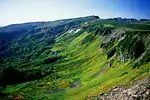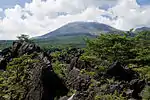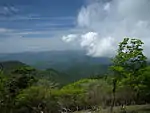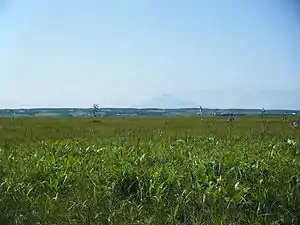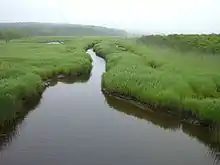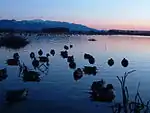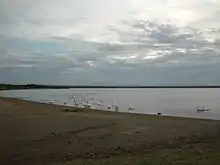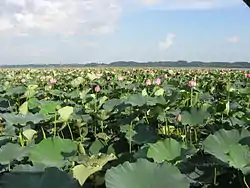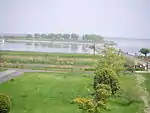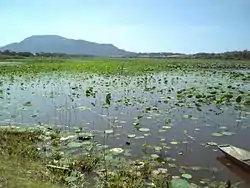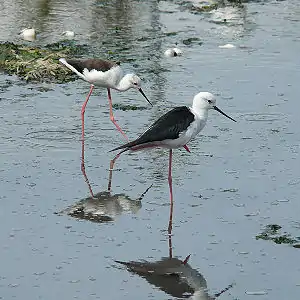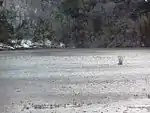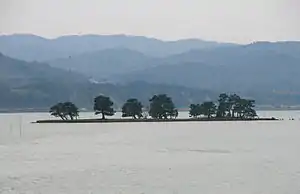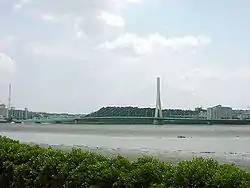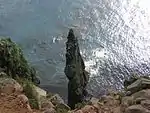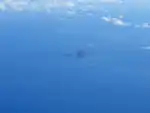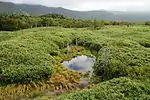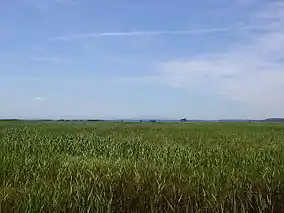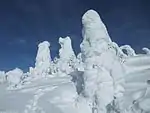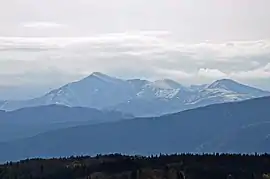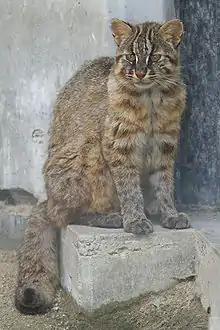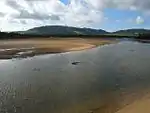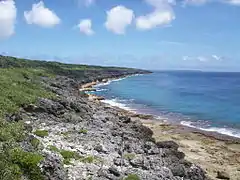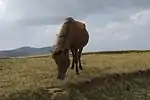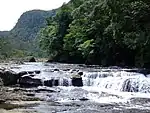Wildlife Protection Areas in Japan
Wildlife Protection Areas (鳥獣保護区, chōjū hogoku) in Japan are established by the Ministry of the Environment and, for areas of more local importance, by the Prefectural Governments in order "to protect and promote the reproduction of birds and mammals" in accordance with the 2002 Wildlife Protection and Hunting Law (鳥獣の保護及び狩猟の適正化に関する法律) (superseding the amended 1918 Law).[1][2][3] The areas established have a maximum duration of twenty years (subject to renewal) and hunting is prohibited within them.[1] Special Protection Areas (特別保護地区) are designated within the Wildlife Protection Areas in order to protect habitats and ecosystems.[1][4]

Classification of wildlife
The wildlife of Japan is classified either as game species or protected species.[5] The former includes thirty species of bird and seventeen of mammal that are considered (1) able to withstand hunting (2) harmful to agriculture and forestry (3) useful for meat or other derivatives.[5] These species include the brown bear, black bear, Japanese deer, Japanese hare, Japanese quail, and Japanese pheasant.[4] Over six hundred species are protected.[4] Insectivorous mammals and rats are excluded from protection since they are considered harmful to agriculture; some marine mammals fall under the alternative jurisdiction of the Ministry of Agriculture, Forestry and Fisheries.[4] While the number of animals hunted is falling with the decline in the number of hunters, the number of birds and mammals "controlled" is rising in relation to damage to crops.[5]
Established Wildlife Protection Areas
As of 1 November 2011, seventy-nine Wildlife Protection Areas had been established at a national level, covering an area of 5,772 km2, including 1,561 km2 of Special Protection Areas.[6] A further three Wildlife Protection Areas totalling 52.3 km2 were established in June 2012, prior to the eleventh Ramsar wetland conference which takes place from 6 to 13 July 2012.[7][8] As of 31 December 2011, 3,783 Wildlife Protection Areas had been established at a prefectural level, covering an area of 30,572 km2, including 1,495 km2 of prefectural Special Protectional Areas.[9] The eighty-two nationally designated areas, divided into the four classes of large habitats (大規模生息地), wetland areas (集団渡来地), breeding areas (集団繁殖地), and habitats of rare birds and mammals (希少鳥獣生息地), are as follows:[6][7]
Complementary measures
Wildlife Protection Areas are just one element in a network of complementary protected area systems.[10] Others include Wilderness Areas and Nature Conservation Areas under the Nature Conservation Law; Natural Parks under the Natural Parks Law; Natural Habitat Conservation Areas under the Law for the Conservation of Endangered Species of Wild Fauna and Flora; Natural Monuments and Special Natural Monuments under the Law for the Protection of Cultural Properties 1950; Nature Conservation Forests under the National Forest Management Bylaw; and Protected Waters under the Preservation of Fisheries Resources Law.[10] Areas are also protected in accordance with three international programmes: the World Heritage Convention (see Yakushima, Shirakami-Sanchi, Shiretoko, and Ogasawara Islands); Man and the Biosphere Programme (see Yakushima, Mount Ōmine/Mount Ōdaigahara, Hakusan, and Shiga Kōgen); and the Ramsar Convention (see Ramsar Sites in Japan).[10]
See also
- Wildlife of Japan
- National Parks of Japan
- Environmental issues in Japan
References
- "Protected Areas in Japan" (PDF). Ministry of the Environment. Retrieved 13 June 2012.
- 鳥獣の保護及び狩猟の適正化に関する法律 [Wildlife Protection and Hunting Law] (in Japanese). law.e-gov.go.jp. Archived from the original on 9 February 2008. Retrieved 13 June 2012.
- "Wildlife Protection System and the Hunting Law". Ministry of the Environment. Retrieved 13 June 2012.
- "State of Global Environment at a Glance: Wildlife Protection". Ministry of the Environment. Retrieved 13 June 2012.
- "Wildlife Conservation and Management in Japan" (PDF). Ministry of the Environment. Retrieved 13 June 2012.
- 国指定鳥獣保護区一覧 [List of Wildlife Protection Areas established at a National level] (PDF) (in Japanese). Ministry of the Environment. Retrieved 13 June 2012.
- 国指定鳥獣保護区諮問案件一覧(全て新規指定) [List of newly established Wildlife Protection Areas] (PDF) (in Japanese). Ministry of the Environment. Retrieved 13 June 2012.
- "The 11th Meeting of the Conference of the Contracting Parties (COP11)". Ramsar. Retrieved 17 June 2012.
- 都道府県指定鳥獣保護区の指定等の現況 [Wildlife Protection Areas established at a Prefectural level] (PDF) (in Japanese). Ministry of the Environment. Retrieved 13 June 2012.
- "Protected Areas in Japan" (PDF). Ministry of the Environment. Retrieved 13 June 2012.
